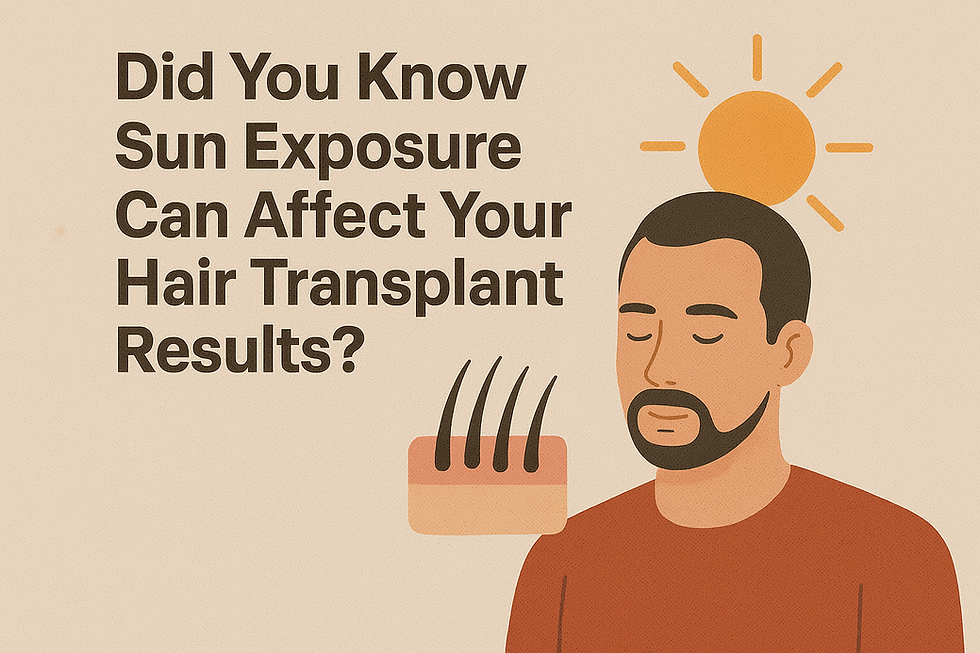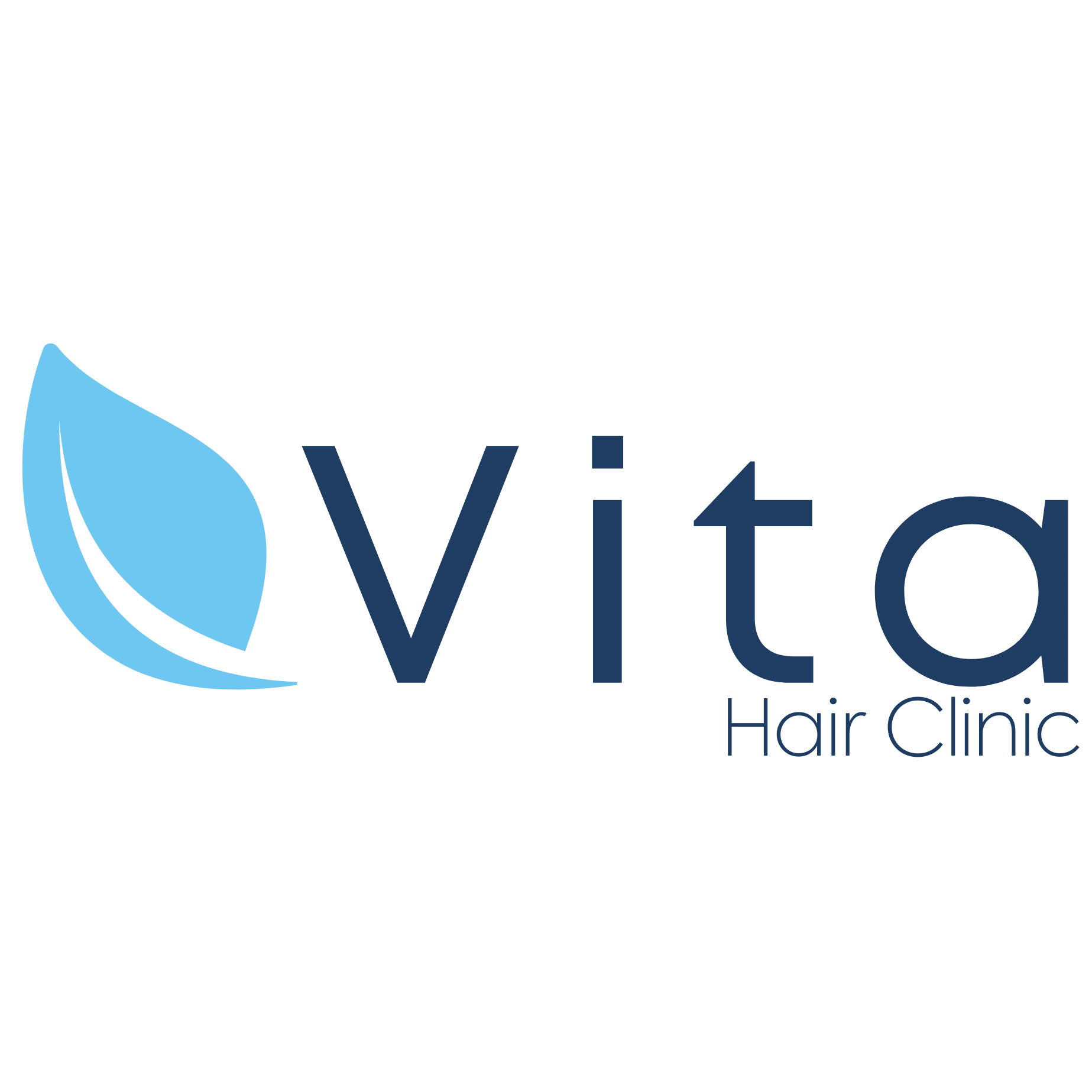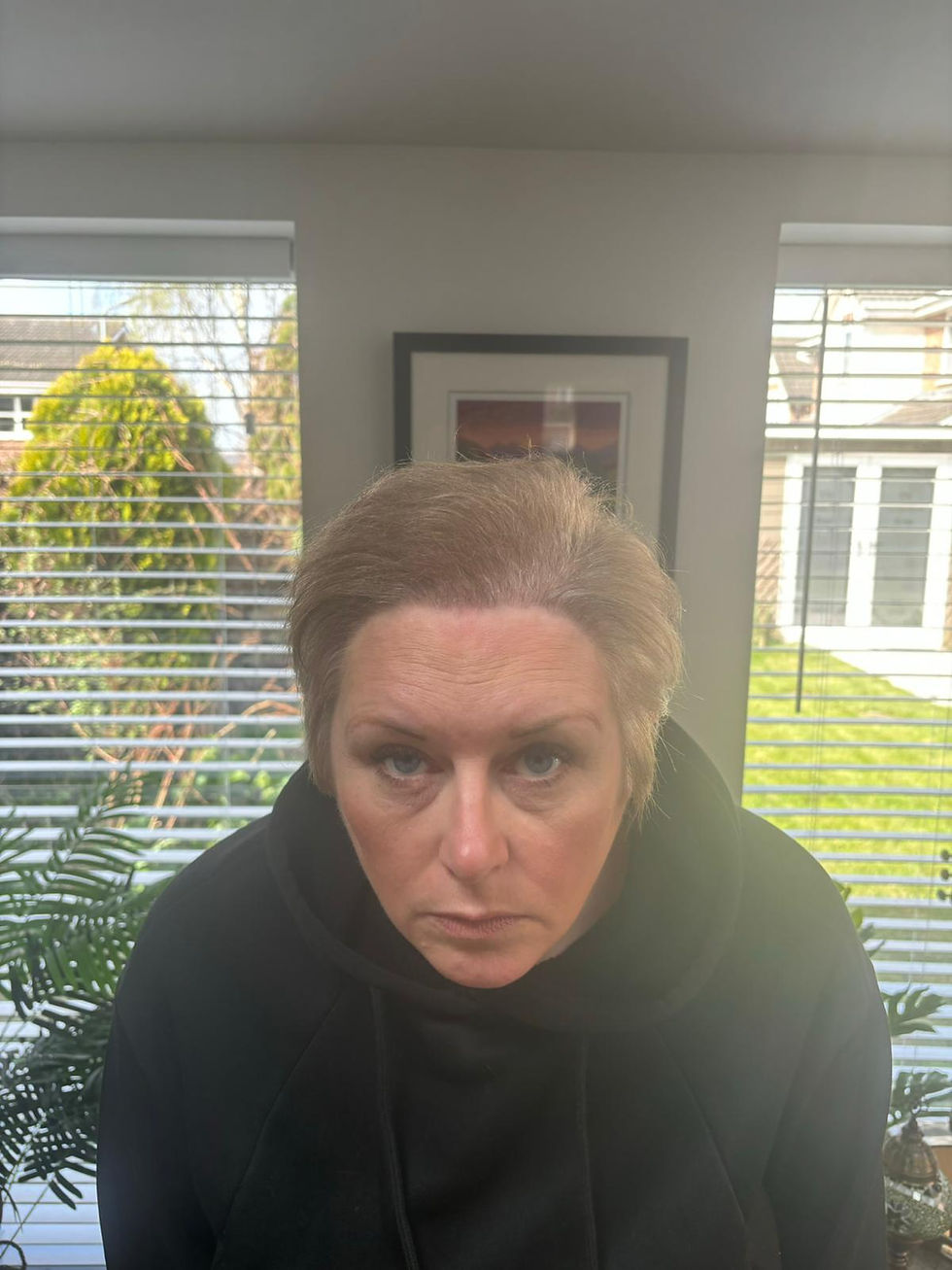Did You Know Sun Exposure Can Affect Your Hair Transplant Results?
- Vita Hair Clinic

- Sep 14, 2025
- 7 min read
Updated: Sep 15, 2025

Proper hair transplant aftercare plays a crucial role in achieving the best possible hair transplant results. One of the most important yet often overlooked factors is managing sun exposure after hair transplant surgery.
Your scalp and newly implanted follicles are particularly sensitive during the healing process, making careful sun protection essential to avoid complications.
This article focuses on how sun after hair transplant can affect your recovery and final outcome. Drawing from expert insights at trusted clinics like Vita Estetic in Turkey, known for their ethical, doctor-led approach to hairline transplant Turkey, this guide highlights practical advice to protect your investment.
Key takeaway: Protecting your scalp from direct sunlight post-transplant significantly improves healing, reduces risks of inflammation or scarring, and supports optimal hair growth.
Understanding the impact of hair transplant sun exposure helps you take informed steps toward a successful recovery.
Implementing effective strategies from expert aftercare advice can make a significant difference in your recovery process.
Additionally, knowing when it's safe to wear a hat after your transplant can further aid in protecting your new grafts. For detailed information on this topic, refer to our guide on wearing a hat after hair transplant.
Understanding Hair Transplants and Their Sensitivity to Sun Exposure
A hair transplant procedure involves relocating healthy hair follicles from a donor area to balding or thinning parts of the scalp.
This method has gained immense popularity as an effective hair loss treatment, especially among those seeking lasting, natural results. Clinics specializing in hair implants Turkey and hair surgery Turkey attract patients worldwide due to advanced techniques and expert care.
The Importance of Protecting Your Scalp After a Hair Transplant
Transplanted follicles remain delicate during the initial healing phase. The scalp undergoes a complex recovery process, making it highly sensitive to external factors like UV radiation.
Exposure to sunlight can disrupt the scalp healing process, causing irritation or damage that compromises follicle survival. Protecting this vulnerable area is critical for maximizing the success of any hair treatment for hair loss.
Additional Resources for Prospective Patients
Understanding the Norwood hair loss scale can provide better insights into one's hair loss condition. Additionally, many prospective patients often wonder, "is a hair transplant painful?" This comprehensive guide debunks myths and sheds light on discomfort levels associated with hair transplant procedures.
Moreover, knowing the hair transplant success rates is crucial for setting realistic expectations post-surgery. With proper care and precautions, including protection from sun exposure, the chances of successful follicle survival and growth can be significantly enhanced.
For further inquiries about the procedure or to book a consultation, feel free to contact us.
The Harmful Effects of Sun Exposure on Hair Transplant Results
Newly transplanted skin is exceptionally delicate. Exposure to ultraviolet (UV) rays during the critical healing phase can cause serious complications that affect the final outcome of your hair transplant.
Key risks of sun exposure after a transplant include:
UV damage: The skin cells around the transplanted follicles are extremely sensitive to UV radiation. Prolonged exposure can damage these cells, disrupting the natural healing process.
Inflammation after hair transplant: Sunlight triggers inflammation, which may cause swelling, redness, and discomfort in the treated area. This inflammation slows down recovery and increases vulnerability to infection.
Sunburn on scalp: The thin, newly exposed scalp tissue lacks the usual protective layers found in healthy skin. Even short periods in direct sunlight can lead to painful sunburn, further damaging delicate grafts.
Tissue damage: UV exposure weakens skin integrity. Damaged tissues struggle to support new hair growth properly, increasing the chance of follicle loss.
Scarring risk: Excessive sun exposure heightens the risk of scarring by interfering with collagen production and wound repair, potentially leaving visible marks or uneven texture on your scalp.
The first few weeks post-transplant represent a window of maximum vulnerability when your scalp requires gentle care and strict sun protection. During this time, even minimal UV exposure can compromise graft survival and reduce overall success rates.
Sun protection must be treated as an essential part of your aftercare routine. Without it, you put months of healing at risk, possibly undermining the investment you made in restoring your hair.
For a comprehensive understanding of hair transplant side effects, including those caused by sun exposure, it's crucial to follow proper aftercare guidelines. Additionally, reviewing before and after photos can provide valuable insights into what results to expect and how important post-operative care is for achieving optimal outcomes.
Essential Sun Protection Practices After a Hair Transplant
Protecting your scalp from sun exposure after hair transplant surgery is non-negotiable for optimal healing and results.
The delicate state of newly transplanted follicles requires focused care, especially in the early weeks.
Key guidelines for post-transplant sun protection:
Avoid direct sunlight for at least 2 weeks: This initial period is when grafts are most fragile. UV radiation can disrupt healing and increase risks of inflammation or pigment changes.
Extend caution up to 3 months: Depending on your healing progress and skin sensitivity, limiting unprotected sun exposure for several months helps ensure strong follicle integration and healthy scalp recovery.
Wear full-coverage hats outdoors: Use wide-brimmed hats that shield the entire scalp area. Hats provide physical protection against UV rays and reduce direct heat exposure, which benefits the scalp's moisture balance.
Use sunscreen for scalp once incisions heal: Waterproof sunscreens with an SPF of 30 or higher are recommended once your doctor confirms it’s safe to apply products on the transplant site. Look for formulations designed specifically for sensitive skin or scalp use.
Reapply sunscreen regularly: If you spend extended time outdoors, reapplication every two hours is necessary to maintain effective protection.
Avoid tanning beds or artificial UV sources: These can be just as harmful as natural sunlight during your recovery phase.
Wearing hats after hair transplant and careful application of sunscreen are practical steps that empower you to take control of your recovery environment.
They help mitigate risks associated with sun exposure after hair transplant, supporting better growth outcomes and minimizing complications.
Following these practices aligns with expert advice from clinics like Vita Estetic, where patient education emphasizes transparency and realistic expectations about post-procedure care.
Real Patient Experiences Highlighting the Importance of Sun Care Post-Transplant
Patient journeys at Vita Estetic reveal clear patterns between sun care adherence and hair transplant success.
Case A: A 34-year-old male followed strict sun avoidance for six weeks, wearing hats and applying sunscreen diligently. His before and after hair transplant photos show dense, healthy regrowth without visible scarring, showcasing how natural a hairline transplant can look when proper care is taken.
Case B: Another patient underestimated sun exposure risks, spending time outdoors without protection two weeks post-surgery. This led to prolonged redness and patchy growth in the transplanted area.
These examples underscore how consistent sun protection during recovery can prevent complications like inflammation or poor graft survival, directly influencing long-term results.
Real patient feedback confirms that respecting this crucial healing window helps preserve the investment in your new hair. It's essential to understand how long the hair transplant recovery takes for optimal results, and part of that process involves adhering to strict sun care guidelines.
Conclusion
Protecting your scalp from sun exposure after hair transplant surgery is non-negotiable to maximize hair transplant success.
Understanding the risks of UV damage during the critical healing phase helps you avoid complications like inflammation, scarring, and poor graft growth.
Follow a clear hair transplant aftercare summary that emphasizes:
Avoiding direct sunlight for several weeks
Wearing full-coverage hats outdoors
Applying waterproof sunscreen with SPF 30+ once incisions have healed
Vita Estetic stands out by providing transparent patient education and doctor-led care under Dr. Kinyas’ expertise. This commitment ensures you receive trustworthy guidance throughout your treatment journey, helping you achieve natural, long-lasting results.
Remember, sun safety scalp healing is a vital step—not just during recovery but for preserving your new hair’s health in the long term.
Taking these precautions seriously gives you the best chance to enjoy your investment in hair restoration—healthy, thick hair that transforms your confidence and appearance.
FAQs (Frequently Asked Questions)
Why is proper aftercare important following a hair transplant?
Proper aftercare is crucial after a hair transplant to ensure optimal healing, protect the transplanted follicles, and maximize the success of the procedure. Following expert guidance helps prevent complications such as infections or scarring, contributing to better hair growth outcomes.
How does sun exposure affect healing and results after a hair transplant?
Sun exposure can negatively impact healing by causing UV damage, inflammation, and sunburn on the sensitive scalp. This can lead to tissue damage, increased risk of scarring, and poor growth of transplanted hair follicles, especially during the critical vulnerability period immediately following surgery.
What makes transplanted hair follicles and the scalp sensitive to sunlight after surgery?
After a hair transplant, the scalp and newly implanted follicles are in a delicate healing phase. The skin is more susceptible to external factors like UV rays which can cause inflammation and damage. This sensitivity necessitates careful protection from sun exposure to support proper recovery.
What are the recommended sun protection practices post-hair transplant?
It is advised to avoid direct sunlight for at least two weeks up to three months depending on individual healing. Wearing full-coverage hats outdoors and applying waterproof sunscreen with SPF 30 or higher once incisions have healed are essential measures to protect the scalp from harmful UV rays during recovery.
Can you share patient experiences that highlight the importance of sun care after a hair transplant?
Many patients who diligently follow sun protection advice report successful long-term outcomes with healthy hair growth. Conversely, those who neglect sun care often face complications such as inflammation or scarring. These real-life journeys underscore how essential sun avoidance is for optimal results.
Why choose Vita Estetic in Turkey for hair transplant treatment and guidance on sun exposure?
Vita Estetic in Turkey is known for its expert insights and transparent patient education regarding hair transplant procedures and aftercare. Their trusted clinics emphasize sun safety and provide comprehensive guidance to help patients maximize their treatment success through proper post-transplant care.













.png)
Comments